How do you swage bullets?
Bullet swaging is a method of using pressure to form a bullet, which is the inert metal portion of the cartridge (which becomes a projectile when fired) by using pressure to flow the materials at room temperature.
Unlike casting, no heat or molten metal is used. The high pressure is applied with a special, powerful press (either hand or hydraulic powered) designed to hold a precision, diamond-lapped die (the vessel that holds the pressure and controls the bullet diameter) and both an internal (inside the ram) punch and an external (in the press head) punch.
The punches press against the material inside the die from both ends, and cause it to flow, filling the die and taking on the exact shape and finish of the die and punch ends. Safety, speed, precision, versatility, and low cost for the number of weights are some of the benefits of swaging.
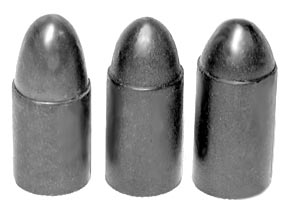
Click the picture of the bullet closest to what you want to make:
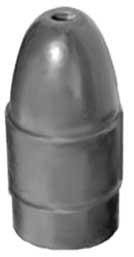
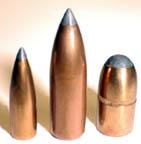
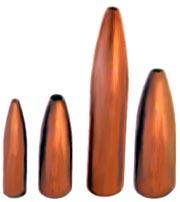

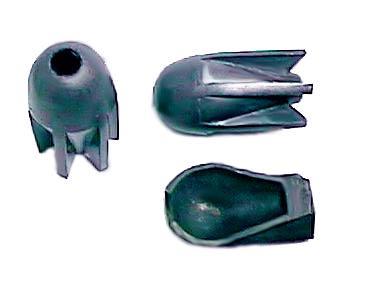
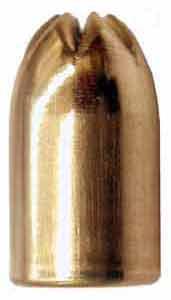
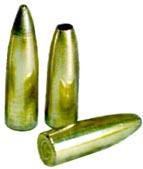
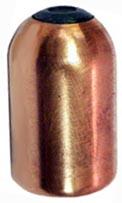

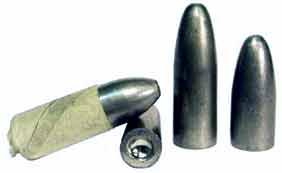
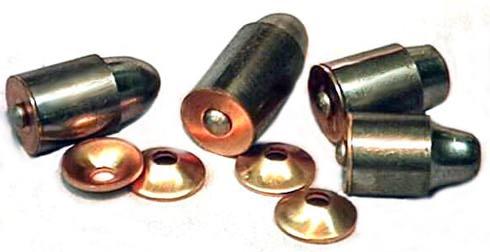

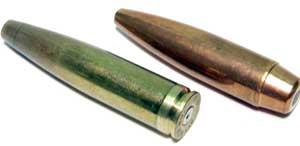
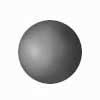
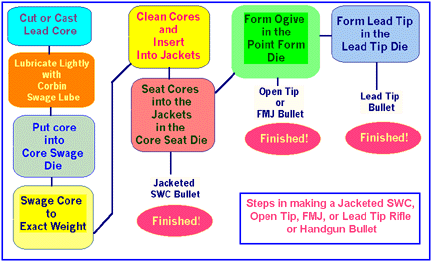 If you would like to see specific swaging operations, terminology, advantages, bullet designs, standard bullet specs and what equipment you need to start, jump to the pages linked to these underlined words. If you would like to know more about swaging and how it is done in general terms, read on...
If you would like to see specific swaging operations, terminology, advantages, bullet designs, standard bullet specs and what equipment you need to start, jump to the pages linked to these underlined words. If you would like to know more about swaging and how it is done in general terms, read on...
Swaging Video
These are the basic variations in bullets that require different sets or combinations of the swage dies: LSWC(lead, swc-nose style, any base including GC and BG) Uses LSWC-1 swage die. Bullet nose and base are formed against punch ends.OGIVAL LEAD(smooth curve nose to shank, all lead, any base) Uses a CSW-1 core swage for exact weight, and a PF-1 point form die for bullet shape and size. Ogive is formed against the interior die wall, so there is no "nose punch". There is an ejection pin instead.JSWC(jacketed shank, swc-nose style, any base) Uses the JSWC-2 die set, which consists of the CSW-1 core swage and the CS-1 core seat die, to swage an exact weight core and then assemble it into a jacket while forming the base and nose against punch ends.FJFB(full jacket, flat base open tip, any ogive shape) Uses the FJFB-3 die set, which consists of the CSW-1 core swage, the CS-1 core seater, and the PF-1 point former. The core is swaged to weight in the CSW-1 core swage, then placed inside a jacket. The jacket and core are expanded and any hollow cavity or cup base shape applied during core seating in the CS-1 die. The ogive or nose curve is formed in the PF-1 point forming die.LTFB(full jacket, flat base lead tip, any ogive shape) Uses the LTFB-4 die set, which consists of the FJFB-3 plus a LT-1 lead tip finishing die. The bullet is made exactly like the previous item, except that enough lead is put into the jacket so it protrudes from the tip. The LT-1 lead tip die is used to clean up and reshape this extra lead so it forms a perfect lead tip against a punch in the LT-1 die. (The same LT-1 die can be used for many different shapes in the same caliber, by using different internal punches).RBTO(full jacket, rebated boattail, open tip,any ogive shape) Uses the RBTO-4 Rebated Boattail, Open tip die set which consists of a CSW-1 core swage to adjust core weight, a BT-1 boattail preforming die which substitutes for the core seater and starts the angled base on the jacket as the core is pressed into the jacket, a BT-2 boattail finishing die which finishes the base with a sharp rebate, and a PF-1 die with a base punch that matches the rebated boattail angle and depth.RBTL(full jacket, rebated boattail, lead tip, any ogive shape) Uses the RBTL-5 die set, which is just the RBTO-4 described above plus the LT-1 die to finish the lead tip, exactly as with a flat base lead tip bullet.Note that there is also a FRBL-6 die set, which merely adds the flat base capability so you can make both RBT and FB bullets, open or lead tip.
Obviously, there are thousands upon thousands of other variations of bullets you can swage, but all of them simply add a hollow point punch or a boattail base, or serrate the jacket, or put teeth on the end of the bullet by pushing it against a special punch...it's not brain surgery! |
Swaging is faster, easier and more safe than the alternative of casting, since no hot lead is used. You can instantly make a finished bullet by putting material inside the die and squeezing it. It pops out on the ejection stroke, finished to far higher precision than is possible with constantly changing temperatures of hot metal with their expanding and cooling moulds. A swage die operates constantly at room temperature, so it remains the same diameter and is not influenced by temperature changes to the degree that you find in cast bullets. Because you don't have to wait for lead to melt, make a lot of test casts to heat the mould, and then clean up the mess afterward, swaging is faster than casting.  The precision of swaged bullets is legendary. Every world class record except perhaps in cast bullet competitions where swaged bullets are not permitted has been won by someone shooting a swaged bullet. Every mass producer and custom bullet maker involved in jacketed bullets or high precision lead bullets uses swaging equipment, most of it from the Corbin die-works in White City, Oregon. Olympic target shooters, military sniper teams, elite special forces groups, law enforcement and security organizations charged with protecting lives and property, and major defense contractors all use Corbin swaging presses, dies, and tools in their prototype development and short run production (we do not build mass production equipment). Everything about our approach to the business aspect of bullet making is aimed toward a secure, comfortable business you can run from your home with one or two people. The concept of exotic, specialty bullets sold at high return to a limited but intensely loyal clientelle through a low overhead direct-mail operation can make more net profit than a mass production company making millions of bullets but only pennies on each bullet. |
| Bullet swaging is extremely simple to do, but because for 30 years Corbin has been developing every imaginable kind of bullet and the tools to build them, we've built up a formidable arsenal of equipment to make any kind of bullet from a round musket ball to a sophistocated multi-section tungsten powder core rebated boattail. Each step is easy, but different kinds of bullets usually require slightly different procedures and possibly different kinds of dies. A simple semi-wadcutter or lead bullet can usually be made in one single stroke, in a LSWC-1- type die. You can also make the bullet jacket yourself, from strip or from tubing, and then use it to make a jacketed bullet. This may take from four to eight dies, depending on the shape and style. Or you can purchase ready-made bullet jackets from us. We have everything from the lead wire to core moulds for using your own scrap lead, from ready made jackets to raw materials like coils of copper strip and/or lengths of cut tubing, and exotic bullet materials like powdered tungsten, powdered brass and copper, plastics and other materials. Chemical products such as swaging lube and liquid jacket, bore cleaners and laps, and core bond flux can be ordered from Corbin as well. |
To get a really good understanding of swaging only takes a few minutes experimenting with the dies. But you can also adsorb years of hard-learned knowledge in a few hours by reading the Corbin Handbook of Bullet Swaging, or get the full 30 years of experiments and developments with bullet designs in our multi-media swaging pack books, ebooks, and video dedicated to the art and science of bullets you can make at home with relatively simple equipment. |
| Equipment can run from a simple die that works in your reloading press and makes an infinite number of weights in a single diameter to a roller bearing steel press and 3-die jacketed bullet outfit that can make solids, soft points, open tips, hollow points, and many other styles with a flat base design. Boattail systems cost slightly more, since there are additional dies involved. Certain kinds of bullets require larger presses (such as the bullets which are made of solid copper or use hard lead alloys). Commercial business packages usually generate from 200 to 500 percent return on investment each year after the start-up period. A swaging die or set of dies can make a wide range of bullet weights and styles. A casting mould makes one basic weight and style only, and you buy another mould for each change. Not so with swaging. It has been said that a single swage die is equivalent to about 500 moulds, in regard to all the bullet weights and styles it can make. Most people are able to make far better bullets than they have ever purchased, in unlimited weights and styles: it is like having a rich Uncle working at a military R&D lab with unlimited access to the machinery, except you don't have to worry about getting caught! |
Start writing here...
As to bullet cost, if you make the same style as you cast now, it costs no more. Whatever your lead costs is what the bullet costs. If you make a jacketed bullet, you have the jacket material cost to add, of course. Most ready-made benchrest quality jackets are about eight cents. You can make tubing or drawn strip jackets at anywhere from three to thirty cents each, depending on the caliber and thickness, where you get the material and so forth. Scrap materials can be free or nearly so. Top grade materials in thick, long, large calibers like the 50 BMG push the upper limit of this range. But the bullets you make are the same or better quality as the ones selling every day for an average of $1.50 each! |
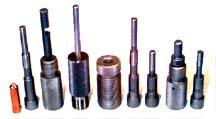 No mass produced bullet can ever be as well built as the custom, exotic designs that are produced by small custom shops for big game, simply because there are not that many people who would understand, appreciate, and pay for such bullets. The average shooter controls the mass market. He is the one to whom everything must appeal in the mass production line-up. Not you. If you were the average shooter, you wouldn't even be reading this! No mass produced bullet can ever be as well built as the custom, exotic designs that are produced by small custom shops for big game, simply because there are not that many people who would understand, appreciate, and pay for such bullets. The average shooter controls the mass market. He is the one to whom everything must appeal in the mass production line-up. Not you. If you were the average shooter, you wouldn't even be reading this!Tell me you haven't at some point said to yourself, "I wish there was a bullet made like this..." and then just shrugged because you knew there wasn't. Well, with swaging dies, you can make it yourself. And if it works as you feel it should, you can probably sell some to other above average shooters who have also wanted something like that and couldn't get it before.  Swaging is the power to let your imagination grow, and see the results immediately. In a few minutes times, you can make a dozen different kinds of bullets with the same equipment, just by changing the technique you use, what you put into the bullet, how you insert the components, what components you decide to use. Swaging is the power to let your imagination grow, and see the results immediately. In a few minutes times, you can make a dozen different kinds of bullets with the same equipment, just by changing the technique you use, what you put into the bullet, how you insert the components, what components you decide to use. |
Technical support and sales e-mail: sales@corbins.com |
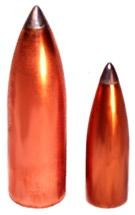 Briefly, here are the steps in making a lead tip, flat base rifle bullet:
Briefly, here are the steps in making a lead tip, flat base rifle bullet: And here are the steps to make a paper patched rifle bullet, or a hollow base wadcutter pistol bullet, or any similar all-lead bullet regardless of the nose and base shape:
And here are the steps to make a paper patched rifle bullet, or a hollow base wadcutter pistol bullet, or any similar all-lead bullet regardless of the nose and base shape: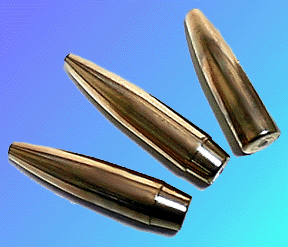

 - PHONE: 541-826-5211
- PHONE: 541-826-5211
How To Swage Bullets